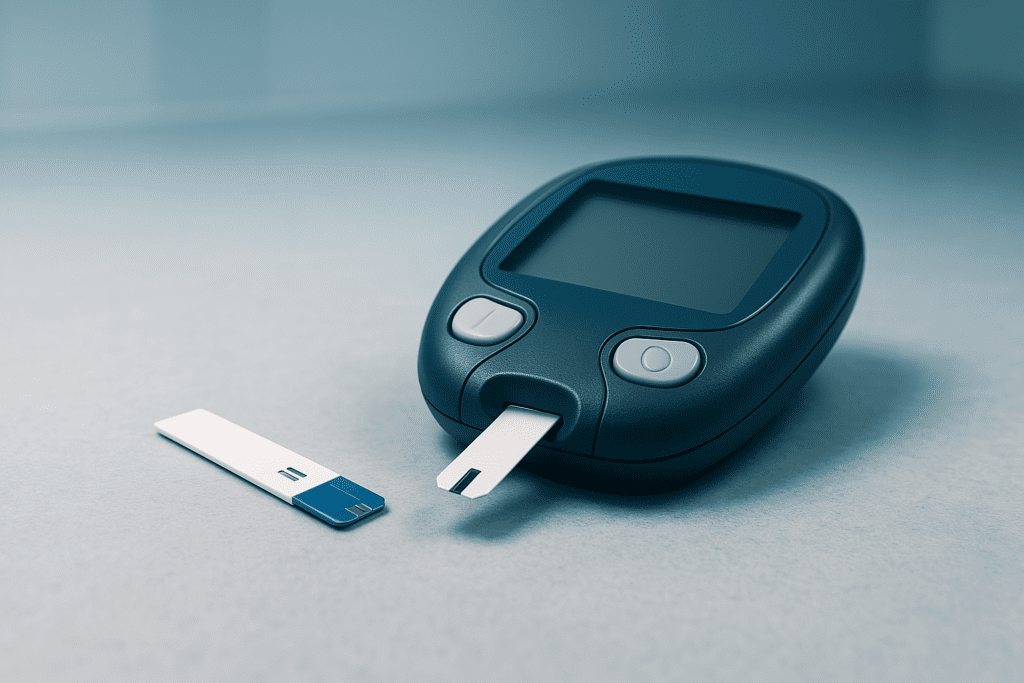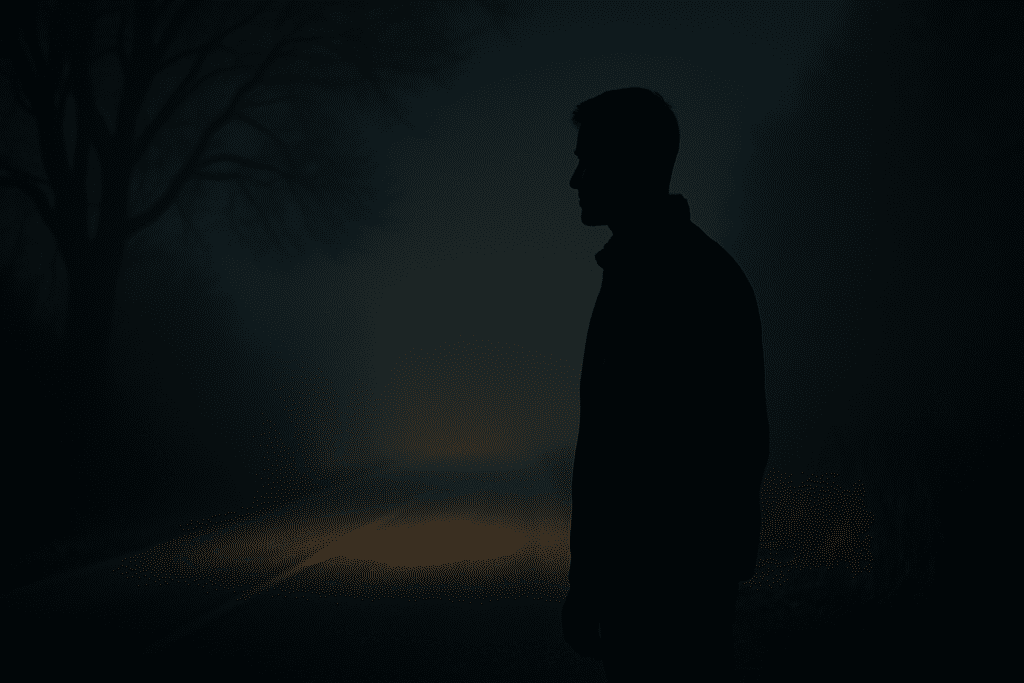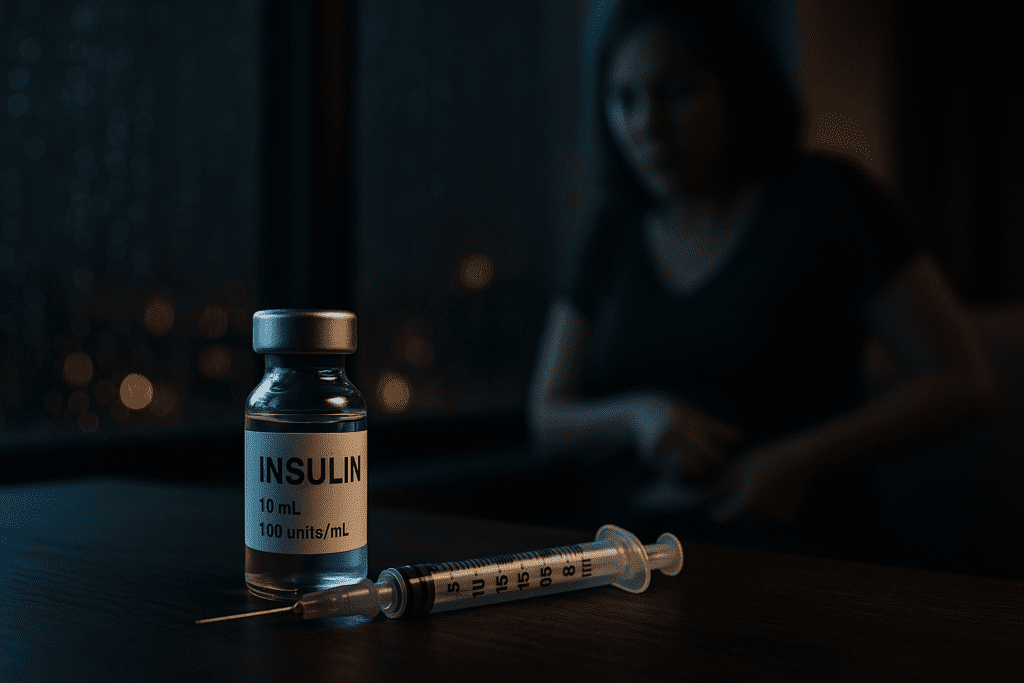Understanding Diabetes: A Silent Yet Pervasive Epidemic
Diabetes is one of the most rapidly growing health concerns in the modern world, yet it often begins silently. It can develop over months or even years before clear symptoms are noticeable. That is why knowing how to tell if you have diabetes is essential for early intervention and effective management. Many people who are living with diabetes remain unaware of their condition, not realizing that the signs were there all along. Recognizing these early warning signs of diabetes can mean the difference between a manageable health issue and severe, potentially life-threatening complications.
You may also like: Breakthroughs in Current Diabetes Research: What the Latest Studies Reveal About Treatment and Prevention
While diabetes is typically classified into type 1, type 2, and gestational diabetes, the majority of adult-onset cases involve type 2. Understanding the early symptoms of diabetes type 2 is particularly crucial because they can be subtle and easily mistaken for signs of stress, aging, or poor diet. Asking questions like “how do I know if I’m diabetic?” or “what does diabetes feel like?” is not just a matter of curiosity—it’s an essential step toward protecting your long-term health. In this article, we will explore the earliest signals your body might be giving you, how to interpret them, and what to do if you suspect diabetes may be developing.
What Does Diabetes Feel Like? Subtle Symptoms That Often Go Unnoticed
For many individuals, diabetes doesn’t arrive with loud warning bells but instead whispers through everyday discomforts. You may feel constantly tired, experience frequent urination, or struggle with blurry vision. These symptoms are easy to dismiss individually, but together, they may point toward the beginning stage of diabetes. One common early warning sign of diabetes is persistent fatigue, a sensation that doesn’t resolve with rest. This happens because your cells are not able to effectively use glucose for energy, leaving you feeling drained.
Another frequently overlooked symptom is increased thirst, often paired with dry mouth. Your body attempts to eliminate excess sugar through urine, which leads to dehydration. Additionally, you may find yourself losing weight despite not trying, or you might experience unexplained hunger even after meals. Many people also report tingling or numbness in the hands and feet due to nerve involvement, which often occurs in the early stage of diabetes. Understanding what diabetes feels like means tuning into these signals and recognizing them as more than just day-to-day inconveniences.

First Signs of Diabetes: Recognizing the Body’s Early Alerts
The first signs of diabetes often manifest in ways that can be confused with other minor ailments. However, these early indicators are the body’s way of flagging a developing imbalance in glucose metabolism. Blurred vision, for example, is not just a nuisance but a potential sign that high blood sugar levels are affecting the fluid balance in the eyes. Similarly, frequent infections—especially yeast infections or urinary tract infections—can be a subtle indicator of elevated blood glucose creating a hospitable environment for microbial growth.
Another early sign to watch for is slow healing of cuts and bruises. Elevated glucose levels impair blood circulation and damage blood vessels, making it harder for your body to repair itself. Skin changes such as dark patches (acanthosis nigricans) around the neck, armpits, or groin are also common early symptoms of diabetes type 2. These signs may seem minor on their own, but when combined, they paint a clearer picture. If you’re wondering “how do you know if you are diabetic?” the answer lies in not dismissing these early clues as isolated or insignificant.
How to Know If You Have Diabetes: Key Tests and Diagnostic Tools
If you’re asking yourself, “how to know if I have diabetes,” it’s essential to understand the diagnostic tools available to confirm your suspicions. While symptoms can provide clues, only medical testing can offer a definitive diagnosis. The most common tests include the fasting blood glucose test, which measures blood sugar after at least eight hours of fasting, and the A1C test, which provides an average of your blood glucose levels over the past two to three months. A random plasma glucose test or an oral glucose tolerance test may also be used to evaluate how your body responds to sugar.
These diagnostic tools are crucial because you can have diabetes and not know it. In fact, many individuals are diagnosed during routine medical exams or when seeking care for unrelated issues. The early signs and symptoms of diabetes are often subtle, and without proper testing, they may remain undetected until complications arise. Learning how to find out if you have diabetes involves not just self-awareness but also proactive medical consultation. It’s important to seek out these tests if you have risk factors such as family history, obesity, or a sedentary lifestyle.
Can You Be Diabetic and Not Know It? The Hidden Risks of Unnoticed Symptoms
One of the most troubling aspects of diabetes is how often it progresses silently. You might wonder, “can you have diabetes and not know?” The answer, unfortunately, is yes—and it’s more common than most people realize. Diabetes can be present for years before it is diagnosed, especially type 2 diabetes. During this time, high blood sugar levels are quietly damaging vital organs including the heart, kidneys, and eyes.
Some people reach advanced stages of diabetes with little to no awareness of the condition. This is why understanding the diabetes initial symptoms is so critical. These include subtle issues like fatigue, unexplained weight changes, or increased thirst. These may not prompt immediate concern, which is why so many cases go undetected. If you’re asking yourself “how will you know if you have diabetes,” it’s important to understand that vigilance and testing are your best tools. The longer diabetes goes undiagnosed, the more it increases your risk for severe complications such as cardiovascular disease, neuropathy, and vision loss.

Symptoms of Beginning Diabetes: Don’t Ignore These Early Signs
The symptoms of beginning diabetes should never be overlooked, especially if they persist or occur in combination. Fatigue, frequent urination, excessive thirst, and blurred vision often top the list, but there are more subtle signs to be aware of. Irritability, mood swings, and difficulty concentrating can be among the early signs and symptoms of diabetes, often mistaken for psychological stress or overwork.
Additionally, people with early onset diabetes might notice changes in appetite or cravings for sugary foods. This is due to the body’s inability to properly use insulin, causing erratic blood sugar levels that prompt a hunger response. If you’ve found yourself wondering “how can I tell if I have diabetes,” start by considering how many of these symptoms you’ve noticed in recent weeks or months. Keeping a health journal and sharing it with your physician can be a useful step in the diagnostic process.
How to Tell If You’re Diabetic: Clues from Daily Life and Personal Health Patterns
The question of “how to tell if you’re diabetic” is deeply personal because it involves recognizing changes in your own health patterns. You may notice that you’re more tired than usual after meals, or that your vision becomes cloudy during the day. You might feel thirstier at night, find yourself waking to urinate frequently, or feel unusually irritable without understanding why. These are not just inconveniences—they could be signs of early onset diabetes developing within your body.
Other daily-life clues include frequent infections, particularly of the skin or gums, or the emergence of dark skin patches in body folds. Foot pain, tingling, or a loss of sensation may also develop due to early nerve damage. If you find yourself asking “what are the first warning signs of type 2 diabetes?” the answer often lies in observing these cumulative changes over time. Being attentive to such details can help you act early and potentially prevent long-term complications.
What to Do If You Think You Have Diabetes: Taking the Next Step Toward Diagnosis and Management
If you suspect you may be developing diabetes, the first step is to make an appointment with a healthcare provider for proper testing and evaluation. Asking “what to do if you think you have diabetes” should always be followed by action. Don’t wait for symptoms to worsen or disappear—early diagnosis can vastly improve treatment outcomes. Your doctor may perform several blood tests, check your blood pressure, and assess your weight, cholesterol levels, and family history.
In addition to testing, it’s helpful to begin making lifestyle changes immediately. Reducing sugar intake, increasing physical activity, and focusing on a balanced diet can help regulate blood glucose even before a formal diagnosis. If you are diagnosed, your provider will work with you to develop a treatment plan, which may include medications, lifestyle counseling, and routine blood sugar monitoring. The sooner you take steps to find out “how to know if you got diabetes,” the more empowered you will be in managing it successfully.
How Can You Tell If Someone Has Diabetes? Recognizing Signs in Others
Sometimes it’s not you but a loved one showing signs of concern, leading you to wonder “how can you tell if someone has diabetes?” Observing changes in behavior, energy levels, and physical symptoms can offer important clues. If someone frequently complains of being tired, looks dehydrated, or has been making frequent trips to the bathroom, these could be signs of early stage diabetes. Pay attention to recurring infections or foot problems, which may also indicate elevated glucose levels.
It can be challenging to approach someone about your concerns, especially when symptoms are subtle. Expressing compassion and offering support to seek medical advice can make all the difference. Encouraging someone to ask their doctor “how do you know if you are diabetic?” is a supportive way to open the conversation. Recognizing the signs early on not only helps with early treatment but may even prevent the development of full-blown diabetes through timely lifestyle adjustments.
Signs of Early Onset Diabetes in Younger Adults and Teens
While diabetes is often associated with older adults, early onset diabetes is increasingly being diagnosed in younger populations due to rising rates of obesity and sedentary lifestyles. The signs of early onset diabetes in adolescents and young adults can be particularly difficult to spot because they are often attributed to hormonal changes, stress, or dietary habits. Yet symptoms like fatigue, mood changes, and frequent urination should not be dismissed.
Teenagers may also experience weight loss despite eating normally or have a sudden decline in academic or athletic performance due to energy issues. Skin conditions such as acne or fungal infections may worsen. If you’re asking “how to tell if your diabetic” in a younger individual, it is especially important to pay attention to behavioral and physical shifts that seem out of character or persistent over time. Early testing and treatment are crucial in preventing long-term damage.
What Does a Diabetic Look Like? Challenging Stereotypes and Misconceptions
The question “what does a diabetic look like?” reflects a common misconception that diabetes has a visible appearance. In truth, diabetes does not discriminate based on outward appearance. A person can appear perfectly healthy and still have uncontrolled blood glucose levels. This makes early screening even more important, especially for those with a family history or other risk factors. Understanding that diabetes isn’t always visible is key to reducing stigma and promoting proactive health behavior.
You don’t need to be overweight, older, or have obvious symptoms to be diabetic. In fact, asking “how do I know if I’m diabetic?” should never be based solely on appearance. The reality is that many cases go unnoticed precisely because people don’t fit the expected image of someone with diabetes. This is why widespread awareness and accessible testing remain vital public health priorities.
How to Know If You Got Diabetes: Listening to Your Body and Seeking Help
Understanding “how to know if you got diabetes” comes down to being honest with yourself about the changes you feel and seeking appropriate care without delay. If multiple symptoms align—such as fatigue, frequent urination, and unusual thirst—do not ignore them. They are the body’s signals that something is amiss. Keeping track of symptoms, undergoing routine checkups, and following your gut instinct are all essential tools in recognizing early signs.
Even if you’re unsure, it’s better to err on the side of caution. Type 2 diabetes, in particular, offers a window of opportunity where lifestyle changes can reverse the course of the disease or significantly delay its progression. With the right attention, those early symptoms of diabetes type 2 can serve as a wake-up call rather than a warning unheeded.

Frequently Asked Questions: Early Signs and Detection of Diabetes
1. How can I tell if I have diabetes if my symptoms are mild or inconsistent?
Many people assume that diabetes always presents with dramatic symptoms, but that is not the case. Mild or intermittent signs can still reflect underlying metabolic issues that warrant medical attention. If you’re wondering how to tell if you have diabetes, especially when symptoms are subtle, it’s essential to look at patterns over time. Occasional fatigue, changes in appetite, or mood fluctuations may seem unrelated but can indicate early glucose dysregulation. When questioning how to know if you have diabetes, even mild signals like low energy after eating or late-night thirst should prompt further investigation. Early action matters, particularly since diabetes first symptoms often don’t appear in isolation.
2. What does diabetes feel like during its earliest stages, especially before diagnosis?
In its earliest stages, diabetes can feel deceptively normal, which is why it often goes undiagnosed. You may not experience pain, but rather a background of vague discomforts—such as frequent yawning, persistent brain fog, or subtle vision changes—that feel like stress or poor sleep. If you’re asking what does diabetes feel like early on, think of it more as a series of nuisances than clear-cut health issues. These feelings, while easy to dismiss, are common diabetes early signs. The beginning stage of diabetes can present as just enough of a difference in your well-being to be noticed, especially when reflecting on your energy or hydration levels over a few weeks.
3. Can you have diabetes and not know it for several years?
Yes, and that reality highlights the importance of early detection. You can be diabetic and not know, particularly in the early stage of diabetes when symptoms develop gradually. Many people live with elevated blood sugar levels for years without realizing the damage being done internally. This is why questions like “can you have diabetes and not know?” are so vital in public health discussions. Silent organ damage, such as kidney strain or microvascular complications in the eyes, can accumulate even before you ask how to know if you got diabetes. Routine screenings, especially for those with risk factors, are essential for revealing diabetes initial symptoms before complications set in.
4. How do I know if I’m diabetic when my symptoms overlap with other conditions like stress or aging?
This is one of the most common challenges in identifying early onset diabetes. Fatigue, irritability, or poor concentration can also occur with hormonal changes, depression, or work burnout. If you’re unsure how to know if you have diabetes versus another issue, the best approach is to combine symptom tracking with objective blood tests. When early signs and symptoms of diabetes coincide with lifestyle changes or emotional stressors, it becomes especially important to consult a physician. A few small lab tests can differentiate between normal aging and symptoms of beginning diabetes. Asking how do I know if I’m diabetic is not about self-diagnosing, but about learning which data points matter most.
5. What are some overlooked or unexpected diabetes first symptoms that people should be aware of?
Beyond the well-known signs like increased thirst or urination, there are lesser-known diabetes first symptoms worth recognizing. For instance, recurrent skin infections, changes in gum health, or heightened irritability may signal early insulin resistance. Another overlooked sign is craving high-carbohydrate foods shortly after eating, which reflects poor glucose regulation. When considering how to tell if you’re diabetic, don’t rely solely on the classic checklist. Many people with early symptoms of diabetes type 2 report an increasing need to nap during the day or a subtle loss of stamina during routine activities. Understanding how to tell if you have diabetes sometimes involves looking past the obvious to the behavioral or neurological clues.
6. How do I talk to my doctor if I suspect early symptoms but don’t want to sound paranoid?
It’s natural to worry about overreacting, but early intervention is a hallmark of responsible healthcare. If you’re unsure how to bring it up, consider framing it with questions like “How do you know if you are diabetic when your symptoms are mild?” or “Can we check for early signs of glucose issues?” Most doctors welcome these conversations, especially when patients have observed specific changes. A well-kept symptom journal showing possible diabetes early signs can guide the conversation and ensure no detail is overlooked. Remember that learning how to find out if you have diabetes isn’t just about getting a test—it’s about initiating an informed dialogue that prioritizes long-term well-being.
7. Are there psychological symptoms in the early stage of diabetes that people should pay attention to?
Yes, and they are often missed. Subtle mood swings, increased anxiety, and even mild depressive episodes have been linked to early glucose imbalances. Asking “what are the first warning signs of type 2 diabetes?” should include awareness of mental health changes, especially if they arise without clear cause. Glucose fluctuations can affect neurotransmitters and stress hormone levels, creating emotional volatility that may be mistaken for situational stress. If you notice that your mental health is declining alongside symptoms like fatigue or dry mouth, it’s time to question whether these could be early symptoms of diabetes type 2. The mind and body often signal problems in tandem—and recognizing these links is essential to understanding how to tell if you have diabetes.
8. Is it possible to detect diabetes before any obvious physical symptoms appear?
Surprisingly, yes. Certain biomarkers and risk profiles can indicate diabetes risk before any outward signs develop. In people with family history or prediabetes, signs of early onset diabetes can appear in lab work long before the classic symptoms manifest. Asking “how will you know if you have diabetes?” should include discussions about proactive testing even in asymptomatic individuals. Annual A1C screenings, fasting blood sugar tests, and glucose tolerance assessments can uncover hidden dysregulation. Understanding how to tell if your diabetic includes knowing that science now allows us to spot issues earlier than ever—often before irreversible damage occurs.
9. How can I support someone who might be showing signs of early diabetes but hasn’t acknowledged them?
Approach the conversation with empathy and curiosity rather than alarm. Asking open-ended questions like “How have you been feeling lately after meals?” or “Have you noticed any changes in your energy?” can open the door to reflection. When wondering how can you tell if someone has diabetes, look for signs like increased fatigue, frequent thirst, or weight fluctuations, then gently suggest a wellness check. The goal isn’t to diagnose them yourself but to help them feel safe asking how to find out if they have diabetes with professional guidance. Offer to accompany them to an appointment or share reliable information to encourage their own research. Recognizing the signs of early onset diabetes in others often requires a compassionate lens rather than a clinical one.
10. What lifestyle habits can help delay or prevent type 2 diabetes in people showing early symptoms?
Once you begin noticing symptoms of beginning diabetes, there’s still a strong window of opportunity to intervene. Regular physical activity—even something as simple as daily walking—can improve insulin sensitivity. Nutritionally, reducing simple sugars and processed carbohydrates while increasing fiber intake supports more stable glucose levels. If you’re asking what to do if you think you have diabetes, these lifestyle shifts are powerful even before a formal diagnosis is made. Regular hydration, stress management techniques, and consistent sleep also contribute to better metabolic control. Knowing how to know if you got diabetes is important, but equally vital is knowing that prevention and delay are possible when early actions are taken with intention and consistency.
Conclusion: Don’t Ignore the Early Symptoms—Know the Signs and Take Action
The early signs and symptoms of diabetes can be deceptively mild, making it easy to dismiss them as temporary discomforts. However, being proactive and asking yourself questions like “how can I tell if I have diabetes?” or “what are the first warning signs of type 2 diabetes?” can lead to life-saving early detection. You don’t need to wait for a crisis to take action. Even vague symptoms such as fatigue or increased thirst can hold the key to identifying a serious underlying issue.
By learning how to tell if you have diabetes and understanding the early warning signs of diabetes, you arm yourself with knowledge that can protect your long-term health. The beginning stage of diabetes doesn’t have to progress into a lifelong struggle. With early intervention, lifestyle changes, and the guidance of a qualified healthcare provider, diabetes can be managed—and in many cases, prevented. Whether you’re wondering how to find out if you have diabetes or trying to help a loved one navigate their own symptoms, awareness is your first and most powerful tool. The road to better health begins not just with answers, but with the right questions—and the courage to ask them.
prediabetes risk factors, signs of insulin resistance, glucose intolerance symptoms, high blood sugar signs, diabetic fatigue causes, metabolic syndrome indicators, hidden signs of type 2 diabetes, diabetes screening recommendations, glucose monitoring tips, managing blood sugar naturally, early detection of chronic illness, diabetic neuropathy onset, silent symptoms of diabetes, undiagnosed chronic conditions, health risks of untreated diabetes, lifestyle changes for blood sugar, fatigue and metabolic disorders, blood sugar fluctuations, type 2 diabetes prevention tips, recognizing metabolic health decline
Further Reading:
What are the early signs of type 2 diabetes?
How Do You Know If You Have Diabetes?
Disclaimer
The information contained in this article is provided for general informational purposes only and is not intended to serve as medical, legal, or professional advice. While MedNewsPedia strives to present accurate, up-to-date, and reliable content, no warranty or guarantee, expressed or implied, is made regarding the completeness, accuracy, or adequacy of the information provided. Readers are strongly advised to seek the guidance of a qualified healthcare provider or other relevant professionals before acting on any information contained in this article. MedNewsPedia, its authors, editors, and contributors expressly disclaim any liability for any damages, losses, or consequences arising directly or indirectly from the use, interpretation, or reliance on any information presented herein. The views and opinions expressed in this article are those of the author(s) and do not necessarily reflect the official policies or positions of MedNewsPedia.


